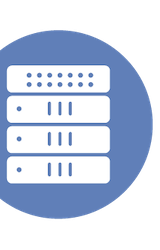Michael Levan dives into the critical role of network visibility in optimizing application performance following the Catchpoint presentation at AppDev Field Day. He emphasizes how in-depth insights into network activity can pinpoint issues affecting application efficiency and user experience. Understanding the interconnectedness of network infrastructure and application behavior is essential for IT professionals to maintain high performance and rapid issue resolution.
Monitoring and Observability (Enter Mezmo)
Michael Levan introduces Mezmo, who presented at AppDev Field Day. They are a compelling solution in the field of monitoring and observability on the dev.to platform. He highlights how Mezmo provides insightful data analysis and log management tools, helping teams to ensure the optimal performance and reliability of their systems. The shift to Mezmo demonstrates how modern observability platforms are becoming essential in efficiently diagnosing and addressing potential IT infrastructure issues.
Is Serverless Still Relevant? (GCP Addition)
The relevance of serverless architecture, particularly in the context of Google Cloud Platform (GCP), is the focus of this Dev To article posted prior to AppDev Field Day. Michael Levan delves into its current standing and future potential. The post explores the efficiency and scalability benefits of serverless computing, while also considering its limitations and best use cases. It serves as a thought-provoking read for developers and IT professionals who are evaluating the viability and strategic fit of serverless solutions within their tech stack.
GCP Cloud Run vs Kubernetes
In this Dev To article posted prior to AppDev Field Day, Michael Levan contrasts Google Cloud Run with Kubernetes, providing clarity on the differences and appropriate use-cases for each platform within the Google Cloud ecosystem. The article breaks down the key features, ease of deployment, scalability options, and cost considerations that developers and infrastructure specialists should weigh when choosing between the two services. It offers insight into how Cloud Run’s serverless framework stacks up against the comprehensive control and flexibility of Kubernetes, guiding users to make informed decisions based on their project needs.
The Game-Changer in Cloud Networking: My Take on Broadcom’s Trident5-X12 Chip
Returning to her roots at Cloud Field Day 19, Shala Warner was intrigued by Broadcom’s Trident5-X12 chip, which appeals to her passion for networking with the expansive possibilities of the cloud. This powerhouse chip not only promises to push the boundaries for AI/ML data processing but hints at a security-first future, setting the stage for a new era where Cloud Operators and CDNs unite to fortify against DDoS threats. As a DevOps advocate, Shala envisions this kind of innovation driving a unified approach in both hardware and software realms, fostering collaborative and resilient cloud ecosystems. Read more in this DEV Community article!
Multi-Cloud in 2024
Selecting the right cloud infrastructure—be it multi-cloud, hybrid-cloud, VMs, or bare-metal—hinges on specific workload requirements and the scale of service operations across various regions. This DEV article by Michael Levan delves into multi-cloud strategies, utilizing different clouds for diverse services or regions, and integrates the efficiency of Dell’s APEX storage, which boasts cost savings and multi-cloud capabilities. While Dell APEX offers considerable storage improvements, the decision to switch from standard cloud storage solutions may depend on the scale of the enterprise and specific storage needs.
Performance Optimization (Platform 9 Edition)
Performance optimization is critical for ensuring the efficiency and efficacy of applications, whether they are deployed on the cloud, using bare metal, or with Kubernetes, as highlighted by Michael Levan. At the heart of performance optimization are three key questions regarding the expected performance, knowledge of how applications are performing, and data to understand this performance, all of which are addressed in this insightful blog post. Platform 9 offers tools like Proactive Ops and Elastic Machine Pool (EMP) to aid in these efforts, providing a robust management plane and smart scaling solutions to maintain optimal resource utilization and reduce costs.
Boosting ML and AI Workloads (Neuroblade)
To hasten the development of Large Language Models and AI/ML workloads, NeuroBlade’s innovative SPU hardware, pluggable into a PCIe slot, promises to amplify existing GPU capabilities by around 30%. As computational demands escalate, particularly for the training of intelligent models, the SPU aims to significantly boost server performance, potentially relieving some pressure from the surging GPU market. To Michael Levan, this advancement serves as a testament to Neuroblade’s commitment to accelerating the pace at which AI and ML technologies evolve and become more efficient.
Hybrid and Private Cloud (Enter Softiron)
As businesses re-evaluate cloud strategies, the concept of cloud repatriation becomes increasingly relevant, making the case for bringing select workloads back to private datacenters. Key to a successful private cloud strategy is the ability to scale; solutions offered by companies like SoftIron facilitate scaling out to public clouds, ensuring flexibility and extending storage capabilities beyond on-prem limitations. Read on in this DEV Community article by Michael Levan.







